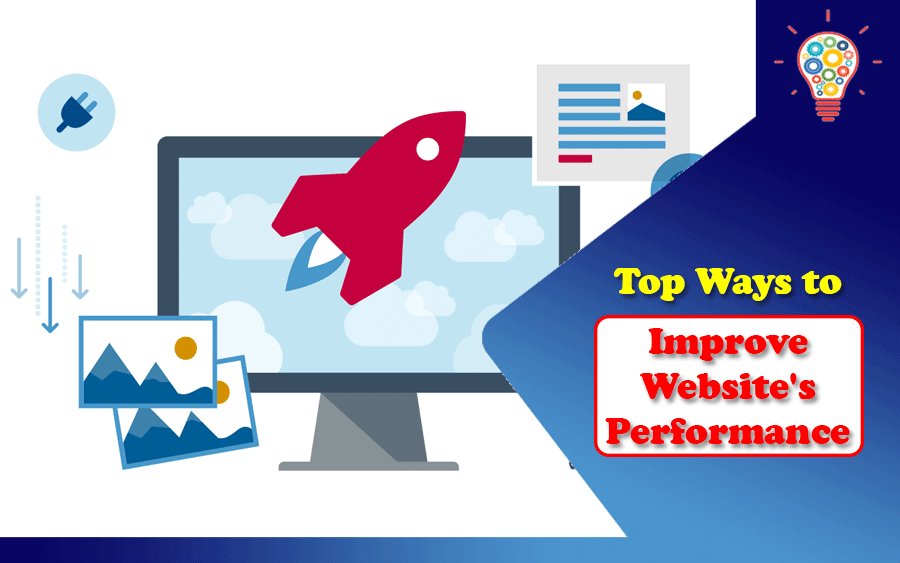Websites that load slowly will never get the audience they deserve. So web developers and marketers need to invest serious time in improving a website’s performance.
There are two ways you can increase your traffic – either by optimizing your site or by increasing your visibility online. While increasing your visibility online is easier to achieve, it’s not as effective as optimizing your site for performance.
A lot of people believe that GoogleBot will take care of websites’ speed issues and they don’t have to worry about optimizing their sites anymore, but this is not true because GoogleBot only crawls content on a website after it has been indexed and if the website has too many errors then the crawling process will be interrupted.
Here are the few ways to Improve Website’s Performance
Table of Contents
Upgrade Your Web Hosting Plan:
It is important for website owners to upgrade their web hosting plans. Depending on the size of your website, you will be able to have multiple benefits from upgrading.
Some of the ways you can improve your website’s performance are by optimizing your server settings and reducing data usage. You should also identify and fix any security risks with your site.
Web servers store all the data related to a site on it. When a server uses up too much data capacity, it slows down all the other work being done on that server. You can optimize your server settings by reducing the number of requests that are made, prioritizing requests in descending order, and using CDNs (Content Delivery Networks).
Enable Leverage browser caching
In the digital age, we have seen an increase in data and pop-ups. This has made it more difficult for websites to perform at their best.
Browser caching can be used to fix this issue. Browser caching is a method of storing the website files on a local hard drive for faster loading speeds as well as avoiding unnecessary downloads.
This tool can also be used when executing WET (Web-Exchange Traffic). This tool allows you to cache your website files on a public server that is accessible from anywhere with internet access, and then your visitors will not have to download the files unless they need them again.
Enabling GZIP compression
GZIP compression is a popular method to improve performance. It compresses the data and makes it smaller in size.
A common misconception is that GZIP compression cannot be applied to images, videos, and other forms of media. However, you can compress these types of content by using tools like TinyGzip and Webpack.
Enabling GZIP compression can significantly improve website performance because the compressed versions take up less space on the server, download faster from a remote server, and are easier to store locally on your computer’s hard drive or local network.
Clean up excess plugins
The use of plugins is common among website developers. However, they can cause performance issues. These issues can be caused by the plugins themselves or by any other third-party scripts and extensions that are being used on a web page. If your business is located in multiple states or countries consider using a multiple location CMS to help decrease clutter on web pages to decrease page load time.
There are various ways to clean up excess plugins from website’s performance
Some simple ways to clean up the excess plugin in WordPress themes include:
1) Delete unused plugins from the Plugin directory or remove unwanted ones using FTP and delete the files
2) Turn off all active plugins in WordPress for a few minutes and then see if the site performs better
3) Reset the cache for your server, database, and all wp files before checking for new problems on your website.
Reduce HTTP Requests
One of the simplest ways to improve a website’s performance is to reduce HTTP requests. When there are fewer requests, the server has more resources available for those who need them. And now, there are ways that you can stop your website from making unnecessary requests and make use of HTTP caching.
HTTP caching is one of the best practices for improving website performance because it reduces HTTP requests and helps people access content faster. But it should be used carefully as it might cause some issues in your website’s performance if not implemented correctly.
Takeaway Points:
A screenshot can be used as a tool to gauge a website’s performance, targeting the user experience (UX) and ultimately enhancing website ranking. A new way to improve your website’s performance is to Capture website screenshots and share it with your team so they can see everything in one place.
Read also: Custom Website Development – Is This the Best Approach for Your Brand?


Thank You for this informative post. I am a webmaster, this post will help me to optimize my website for better performance.